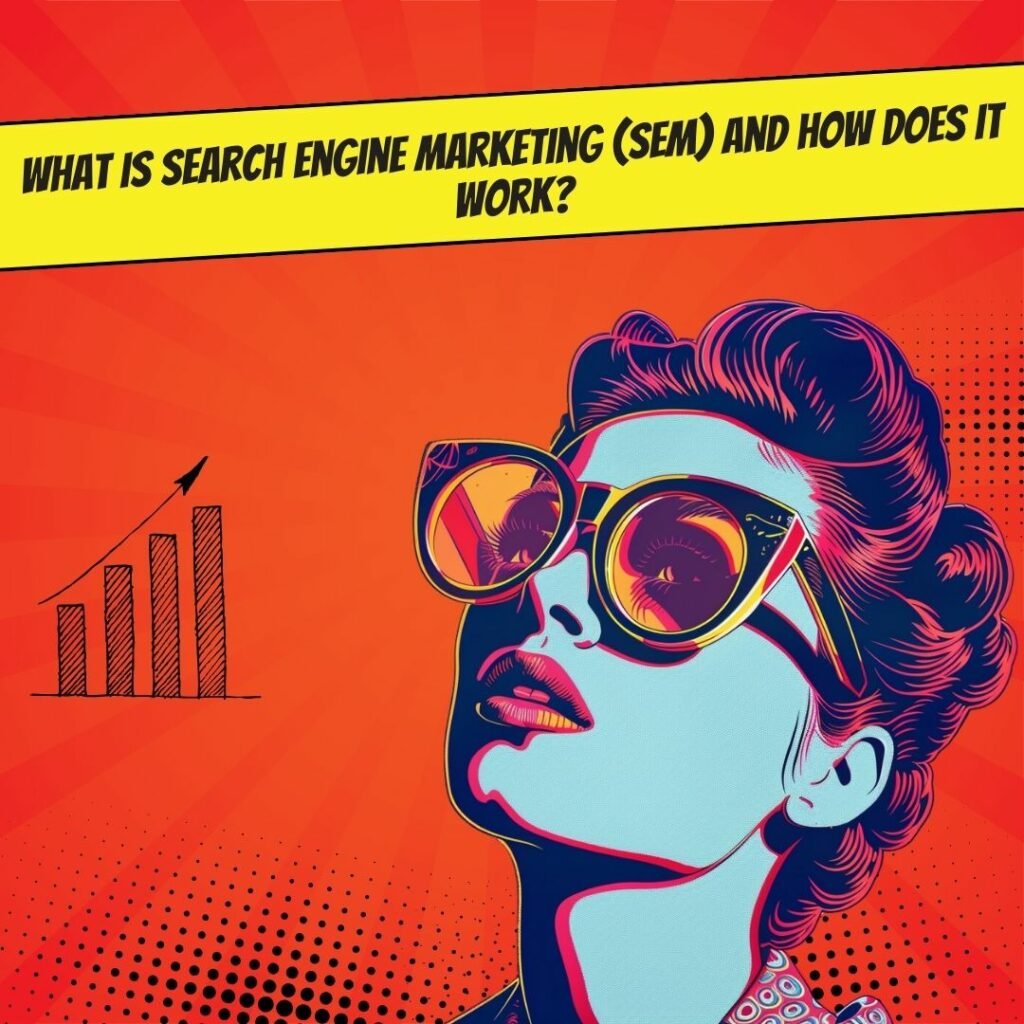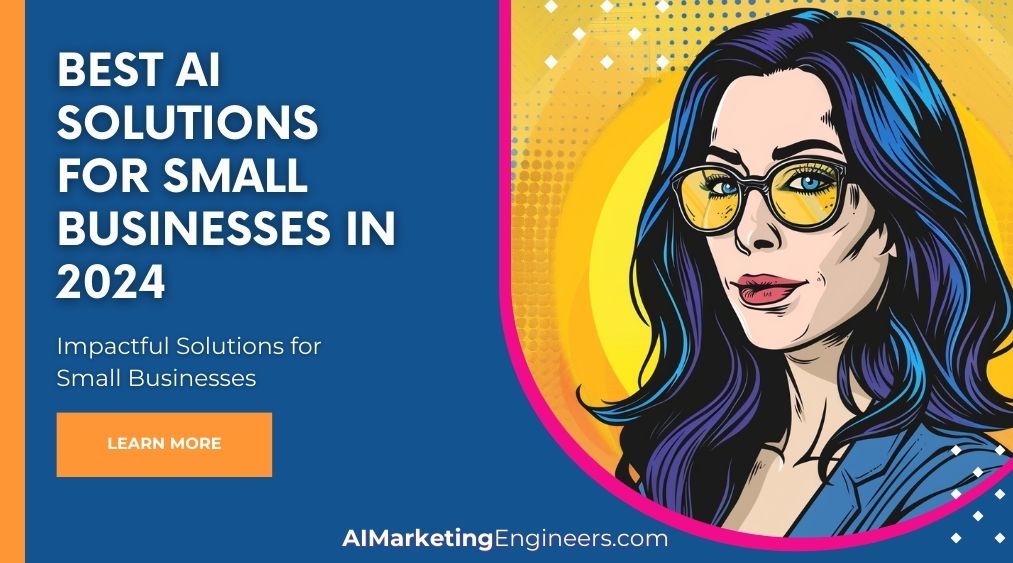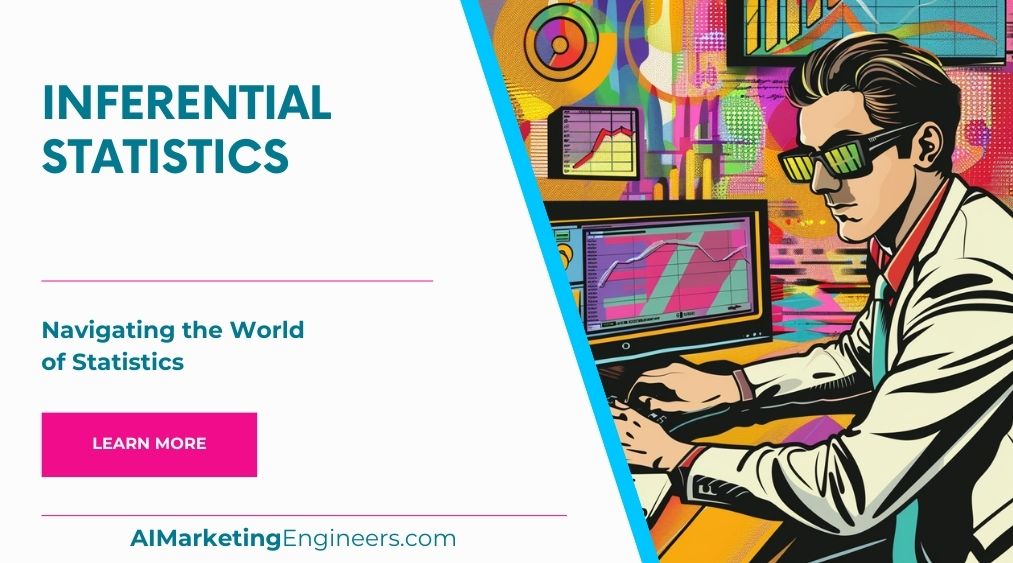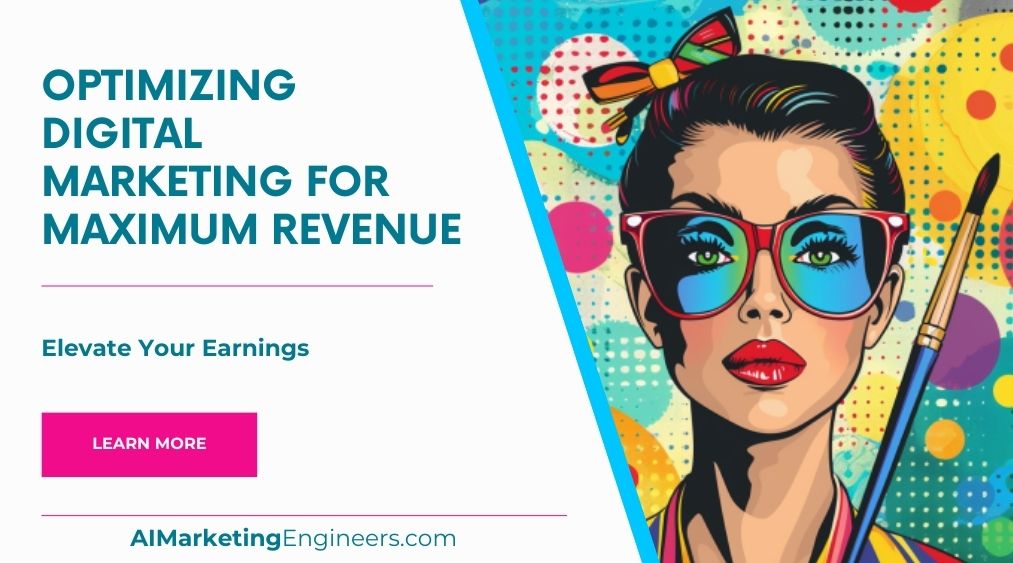Key Takeaways
✅ Paid Advertisements: It’s not just about throwing money at search engines and hoping for the best. Discover how, with the right approach, each click can cost less and bring in more value. We’re talking prime digital real estate here; your ads right where eyes are guaranteed to see them.
✅ Keyword Research & Bidding: Are you aware of the magic words that customers use to find businesses like yours? We’ll show you how to find them and what to do next. It’s a game of high stakes and strategy where the highest bidder doesn’t always win.
✅ Optimization & Measurement: Throw the guesswork out the window. We’ll walk you through reading the secret map of metrics that’ll show you where the treasure is buried. It’s all about tweaking, refining, and enhancing your SEM efforts for the best outcomes,

Introduction
Have you ever wondered how Search Engine Marketing (SEM) can be your secret weapon in the online world? Why do some businesses pop up at the top of search results and rake in click after click, while others seem to sink into the digital abyss? SEM is that difference-maker, and it’s not just for the tech wizards or marketing gurus – it’s for you, too.
In this guide – “Unlocking the Power of Search Engine Marketing (SEM): A Comprehensive Guide” – we’re going deep into the what’s, why’s, and how’s of SEM. From understanding Pay-Per-Click (PPC) advertising to crafting ads that people can’t help but click on, we’re covering it all. We’re going to help you build a strategy that not only fits your business but also gets your message out to the world in a big way.
Stay tuned. We’re about to embark on a journey packed with actionable insights and tips that have the potential to revolutionize the way you connect with customers and grow your business. So, are you ready to unlock the full potential of your online presence? Let’s get started!
Top Statistics
| Statistic | Insight |
|---|---|
| Global Digital Ad Spending: Reached $378 billion in 2020, with an estimated growth rate of 9% for 2021. (Source: Statista) | This level of investment signals a strong confidence in digital avenues. Think about it, where are you likely to invest your money? Somewhere promising, right? |
| Mobile Clicks Share: Mobile devices drove more than half (56%) of all clicks from search ads globally in 2020. (Source: WordStream) | More than just knowing this, have you noticed how glued we all are to our little screens? That’s a treasure trove for marketers right there! |
| Google’s Search Engine Market Share: About 92% as of January 2021. (Source: StatCounter) | That’s a huge chunk, isn’t it? Makes you wonder, when deciding where to place your ads, might the answer be staring you right in the face? |
| Search Ad Spend: Projected to reach $170.62 billion by 2024. (Source: Statista) | It’s not slowing down, is it? Every year the pie gets bigger and the question is, how can you get a piece of that growth? |
| AI in SEM: Artificial intelligence and machine learning are expected to play a significant role, with Google Ads already using AI for bidding strategies. (Source: Forbes) | Imagine having a crystal ball to predict the best ad strategies. Well, AI is kind of like that but more scientific and less mystical. Could this be the edge you need? |
Understanding Key Concepts
1. Organic vs. Paid Search Results
Have you spotted some websites that pop up at the very top of your search without that little “Ad” label? These are the smooth operators of organic search results. These guys have earned their front-row tickets through a mix of relevance and authority, not because they paid for it. On the flip side, paid search results are like the folks who bought VIP passes. Businesses fork over some cash—often through an auction—to secure a spot where you’re more likely to see them. It’s a battle for visibility, and both strategies have their secret sauce to win you over.
2. Decoding PPC Advertising
Picture this: every time someone clicks on your ad, it’s like dropping a coin into a piggy bank—this is the crux of pay-per-click (PPC) advertising. You’re not throwing money at the wind, hoping it’ll stick; you pay up only when someone shows genuine interest in what you’re offering. Think of it like fishing; you’re only using the bait for the fish that nibble, not the entire ocean.
3. Understanding the Money Talk
Does talking about CPC (cost-per-click) and CPM (cost per thousand impressions) give you a headache? Let’s simplify it. CPC is like paying for a specific souvenir at a tourist spot; you pay for what you pick. With CPM, it’s more like a buffet; you pay one price for exposure to a thousand viewers, no matter what. And then there’s ROAS (return on ad spend), your compass to determine if the money you’re putting into ads is guiding you to a treasure or leading you off the plank.
Building an Effective SEM Strategy
1. Identifying Target Audience and Keywords
Are you tired of feeling like you’re just yelling into the digital void? To avoid that, you need to find your people, the ones who are actually interested. That’s why pinpointing your target audience and the right keywords is like picking the right party to attend. You want to be where your interests mesh with others, so when you speak up, they’re excited to listen.
2. The Art of Compelling Ad Copy
Think back to the last time you clicked on an ad. What was it that caught your eye? It wasn’t just a jumble of words, was it? It was something about that compelling ad copy that made you think, “Hey, this sounds like something I need!” Those few, well-chosen words have the power to grab your attention more firmly than the largest and most colorful billboard.
3. Creating Inviting Landing Pages
Isn’t it a bummer when you click on something promising, but the page you land on is as welcoming as a “Keep Out” sign? It’s downright frustrating. A good landing page is like a warm greeting; it makes you feel right at home and ready to explore. If the landing page hits the right notes, you’re more likely to hang around for a while, maybe even take off your shoes and stay.
Managing Campaigns
Ever find yourself staring at a screen full of charts and graphs, struggling to make sense of it all? Performance metrics are your compass in the vast sea of data, pointing you towards what’s working and what’s not in your SEM campaigns. Keep a sharp eye on your click-through rates, conversion rates, and cost-per-conversion—these numbers whisper the secrets of customer behavior. Think of them as breadcrumbs leading you to better decisions and strategies.
But what about when the data just seems like random numbers? That’s when you start looking for the story behind the stats. Analyzing data isn’t about getting all caught up in the numbers; it’s about understanding the why. Why did people click more on one ad and less on another? Was it the image, the words, or the offer itself? Getting to the bottom of this can turn a good campaign into a great one.
Now, onto the virtual landscape your ads will inhabit. Considering whether your ad should be a skyscraper banner or a square side-note is like choosing the right outfit for an event. Ad formats and placements can make or break your message’s impact. Go for the type that meshes well with your audience’s online habits and the platform they’re on. And finally, let’s get personal. No one likes being just another face in the crowd, right? Targeting and timing your ads helps you whisper directly into the ears of those folks who might actually want to hear from you. Use demographics, interests, and behaviors to shape who sees your ads and when, ensuring your message hits home more often than not.
Expanding Beyond Google Ads
Ah, Google—the colossus of search. But have you ever caught yourself thinking, “Is there more out there?” Exploring alternatives to Google can lead you to spaces full of potential customers who aren’t being drenched by the competition. Bing, Yahoo, and even social media platforms can be fertile ground for your SEM efforts.
Then there’s the one that got away: the visitor who bounced off your site too soon. Remarketing is your second chance, a way to say “Hey, remember me?” as you nudge them with ads tailored to their interests, reminding them what they’re missing out on. It’s like running into an old friend and picking up right where you left off.
And don’t underestimate the power of the local scene. Ever searched for a service “near me”? Your customers do too. By pushing your presence in local SEO, you’re putting out a digital signboard in your neighborhood, tapping into the search habits of the community around you. It’s like being the popular local shop that everybody knows and loves.
Staying Up-to-Date
The digital marketing world is ever-changing, always throwing curveballs in the form of new tools and features. To not get left eating dust, keeping up with industry updates is like having an ongoing conversation with the online marketing world. It keeps you sharp, informed, and ready to leap on new opportunities.
But how do you keep learning without getting swamped? Selective learning is your friend here. Choose webinars, follow blogs, or join online forums that resonate with your goals and industry niche. It’s like picking the right courses to expand your knowledge without trying to drink the entire ocean.
Measuring Success and ROI
Let’s talk about success and not just any success, but the kind that you can measure. Setting up KPIs is essentially plotting the X on your treasure map. It’s defining what treasure looks like for you, whether it’s a higher click-through rate, more sales conversions, or increased website traffic. Getting these KPIs in place is like setting up signposts on your path to victory.
Now, onto the beast that scares even the bravest souls – analytics. Think of analytics tools like a friendly guide in the treacherous terrain of SEM. They can show you where users are coming from, what they’re doing on your site, and how long they’re sticking around for. With this insight, you can streamline your journey towards more meaningful engagement.
Lastly, there’s the all-important ROI. Calculating your return on investment is like tallying up your triumphs and learning from your loses. It tells you whether the coins you’re pouring into the SEM slot machine are hitting the jackpot or just disappearing into the abyss. Understanding ROI helps you tweak and tailor your approach, ensuring your marketing endeavors are bang on the money.
AI Marketing Engineers Recommendation
Recommendation 1: Enhance User Experience for Better SEM Performance: Focus on improving the landing page user experience. Why? Because search engines, like Google, are increasingly considering user experience signals when determining ad ranks. If you’re running ads that lead to a slow, clunky, or confusing website, chances are your ad rank will suffer, and you’ll pay more for less visibility. Ensure your site is fast-loading, mobile-friendly, and offers clear, actionable information. Conduct regular A/B testing to find what works best for your audience.
Recommendation 2: Leverage Smart Bidding Strategies with AI: Embrace AI-powered smart bidding strategies in Google Ads or other platforms. Gone are the days when setting bids was purely a manual game. Today, with advancements in artificial intelligence, you can use machine learning-powered bidding strategies like Target CPA (cost-per-acquisition), Target ROAS (return on ad spend), or Enhanced CPC (cost-per-click). These strategies analyze a plethora of data points in real-time to adjust your bids for the best possible outcomes, aiding you to win that sweet spot in ad placement without overspending. Have you given these smart tools a go yet?
Recommendation 3: Focus on Local SEM for Local Businesses: If you’re a local business, zero in on Local SEM strategies. With the uptick in “near me” searches and local business listings gaining prominence in search results, ensuring your business pops up when someone’s looking for what you offer in their vicinity is gold. How can you do this? Make sure to optimize your Google My Business listing, include location-based keywords in your SEM campaigns, and use location targeting options to pin down those ready-to-buy local customers. Have you claimed your local search territory yet?
Conclusion
So, what’s the real scoop when we’re talking about Search Engine Marketing (SEM)? It’s like the Swiss Army knife in your digital marketing toolkit; versatile and precise if you know how to use it. Remember when I mentioned those paid ads that pop up before your organic search results? That’s SEM in action, working to get you noticed. Think about it: when you look something up online, how often do you go past the first page? Rarely, right? That’s why SEM is so critical.
Crafting an SEM strategy might sound daunting, but it’s about knowing your audience, finding the right words they’re searching for, and then convincing them with content that sticks. It’s like setting up a shop window that’s so enthralling, people can’t help but come in and take a look around. And yes, you’ll need to keep an eye on the money—what you’re spending and what you’re making—but, boy, when the magic happens, it’s like watching your favorite team score the winning goal!
Don’t put all your eggs in one basket, though. Google Ads is big, but it’s not the only game in town. Bing Ads and social media PPC are like the neighborhood coffee shops that still draw a crowd – not everyone goes to the big chain on the corner. And let’s not forget about staying sharp with the latest trends and tools; it’s like keeping your shop’s decor fresh and exciting.
We’re talking about connecting with people, drawing them in, and building relationships. That means not just getting them to your site but giving them reasons to stick around and come back. Wondering how you’ll know if you’re doing it right? Look at the numbers—traffic, clicks, conversions—the story they tell will help you dance to the beat of the SEM drum.
FAQs
Question 1: What is Search Engine Marketing (SEM)?
Answer: Imagine SEM as a spotlight for your website. It’s all about making your online presence shine on search engine pages when people are looking for something you offer. This is usually done through things like ads that you pay for every time someone clicks on them. It’s all about visibility!
Question 2: How does SEM work?
Answer: Think of SEM like an auction. You bid on words or phrases that relate to your business and when people search for those words, your ads could show up right there next to the search results. The better and more relevant your ad, the higher the chance it might be seen.
Question 3: What are the benefits of SEM?
Answer: SEM comes with a treasure trove of goodies. You’re talking about instant online visibility, reaching the perfect audience at the right time, understanding how your ads are doing with real numbers, boosting familiar faces recognizing your brand, and connecting with buyers no matter where they are on their shopping journey.
Question 4: Is SEM different from Search Engine Optimization (SEO)?
Answer: Absolutely. While both live in the world of search engines, SEM is like the fast track with paid ads, and SEO is the marathon, naturally working its way up the search rankings by polishing and perfecting your website’s content.
Question 5: What is Pay-Per-Click (PPC) Advertising?
Answer: PPC is as straightforward as it sounds: you only pay when someone is curious enough to click on your ad. It’s a big part of SEM and the bread and butter of platforms like Google Ads.
Question 6: How do I choose the right keywords for my SEM campaign?
Answer: Picking the right keywords is like choosing the right outfit – it has to be a perfect fit. You’ve got to get into your audience’s shoes and think about what they would search for. Using keyword tools can help you discover just that – effective words or phrases that can get you noticed without too much competition.
Question 7: Can SEM help me achieve better ROI than other marketing channels?
Answer: Sure can! When you nail down the right keywords, create ad copy that grabs attention, and keep fine-tuning your efforts, SEM might just become your golden goose for getting more bang for your buck.
Question 8: How can I measure the success of my SEM efforts?
Answer: It’s all about the scoreboard, which in SEM terms means keeping an eye on things like how many people click your ads, how many take the plunge and buy something, how much it costs you to win a customer, and how effectively your ad budget is being spent.
Question 9: Should beginners start with SEM or SEO first?
Answer: Well, it’s sort of like asking if you should walk before you run. SEO is a good start with lower costs and benefits that stick around. That being said, dipping your toes in SEM waters early on can give you a quick boost and teach you a ton about your market.
Question 10: Are there any best practices for managing an SEM campaign?
Answer: Think of managing SEM campaigns like tending to a garden. You need a clear vision for what you want it to look like, keep testing and trying new things to see what grows best, keep tabs on your progress, freshen up your ads to keep them blooming, and stay on top of any changes in the weather, or in this case, search engine algorithms.
Academic References
- Ozolins, N., et al. (2016). The Effectiveness of Online Advertising Channels: A Cross-Media Study. Journal of Interactive Advertising, 16(1), 2-18. This study rolls up its sleeves to get to the bottom of which online advertising channels get you those precious clicks. Spoiler alert: PPC is the short-race champ here with enviable clickthrough rates.
- Liu, Y., et al. (2007). Search Engine Marketing: The Impact of Advertisement Position on Click-Through Rates. Journal of Interactive Marketing, 21(3), 76-86. This one’s all about location, location, location. If you’ve ever wondered why some ads get more love than others, these guys say it’s because they’re sitting higher up in the search results. Makes sense, right?
- Hewett, M., et al. (2006). The Effectiveness of Keyword Match Types in Search Engine Advertising. Journal of Advertising Research, 46(3), 339-346. It’s a deep dive into the world of keywords. You know, those search terms we all type in a hurry. This paper shows that going broad gets you seen more but might not snag the serious shoppers as well as those laser-focused exact match keywords do.
- Ghose, A., et al. (2016). An Empirical Analysis of Sponsored Links in Web Searches. Marketing Science, 35(1), 1-19. Ever wonder what we all really think about those sponsored links? Turns out we’re a bit skeptical and don’t find them as on-the-nose as regular results. But, put them at the top and, yup, we’ll click on them anyway.














